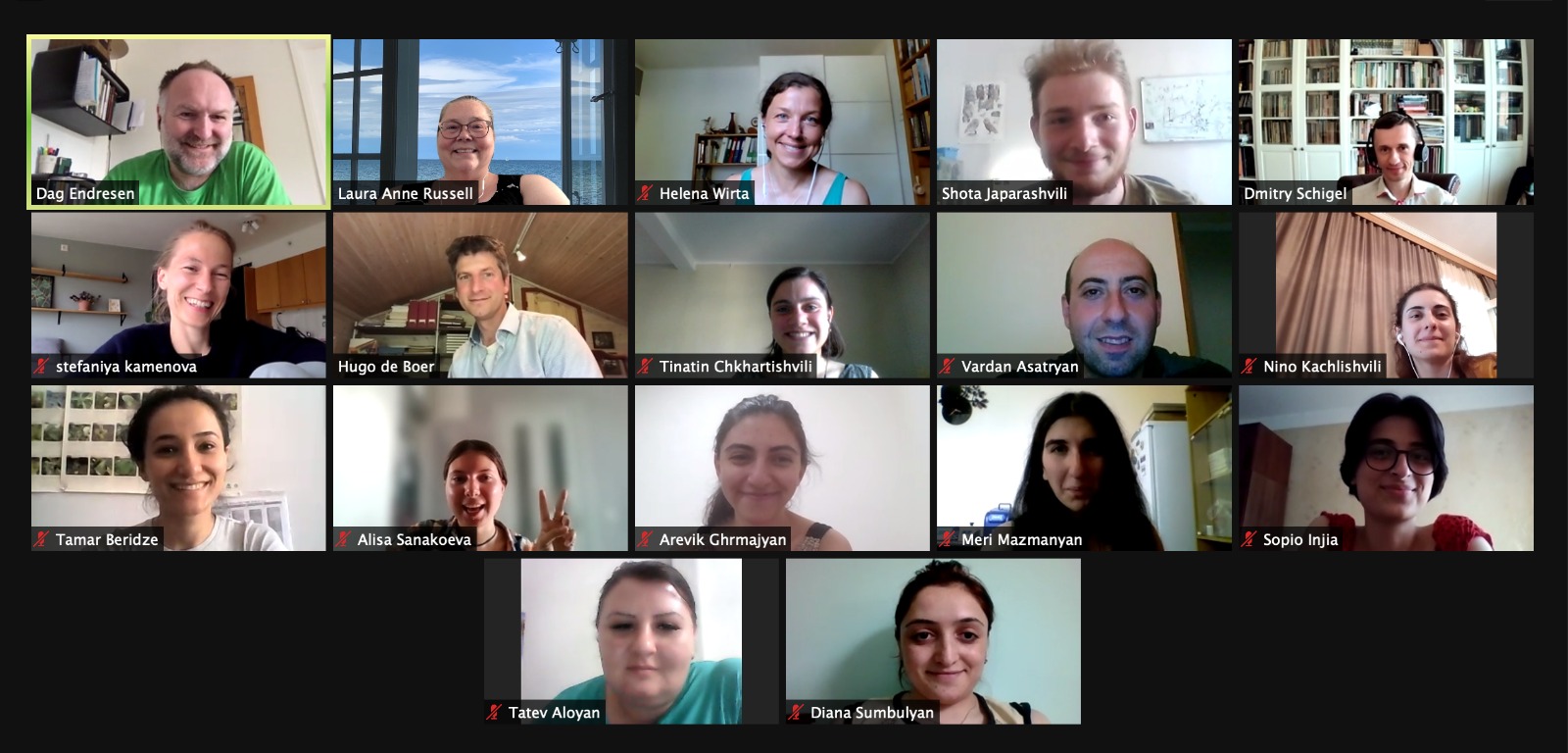Accelerating biodiversity research through DNA barcodes, collection and observation data
This course is a collaboration between the Diku-funded University of Oslo project BioDATA, the BMBF-funded project Caucasus Barcode of Life (CaBOL), and GBIF - Global Biodiversity Information Facility.
Agenda
The course agenda and program provides an overview of lectures and student assignment during the course week.
Dates
GBIF course on data management skills 15 - 18 June 2021, daily from 11 am to 6 pm local Armenian/Georgian time (07:00 - 14:00 UTC). The deadline for applications was May 18 2021, and the selected participants have been contacted.
Duration
Four days, plus eight hours in preparatory time.
Scope
Data management skills for accessing and publishing data through biodiversity data platforms. This is an observation/specimen -> published record course that does not include wet lab steps.
Aim
This course will teach how to use DNA barcodes, collection and observation data to resolve research questions in biodiversity. The four-day intensive programme will use a combination of lectures, tutorials, and hands-on exercises. You will learn to handle biodiversity data including DNA barcoding. You will gain practical experience in using open and digitally documented biodiversity data through GBIF and BOLD to answer biodiversity research questions. You will understand and practice capturing observation, collection, and genetic data from analogue and digital sources. Finally, the course provides basic skills in data publishing through GBIF.
Prerequisites
The course is suitable for MSc and Ph.D. students in biology and other professionals in relevant fields. Participants should have an affinity or professional interest in biodiversity. Participants need to have the motivation and interest to handle DNA barcodes, museum collection, and observation data. A good understanding of English is necessary to follow the course, carry out the exercises, and receive support during the teaching.
Intended Learning Outcomes
-
Understand and be able to explain the concept of species delimitation.
-
Learn to use genetic sequence data as a DNA barcode to identify a species.
-
Learn to publish and retrieve data from GBIF and BOLD.
-
Learn the basics of data capture, cleaning, storage, geo-referencing, and citation.
-
Critically assess the quality of own and external data and their fitness for purpose.
-
Practice the key tools and approaches to maximize data quality, data linking and data reuse.
-
Explore the benefits of FAIR and open data principles in biodiversity research and collaboration.
-
Understand the value of data management as a research-enabling tool.
-
Broadly understand the importance of international biodiversity infrastructures, and how these can contribute to biodiversity assessments, monitoring, conservation, and red-listing.


